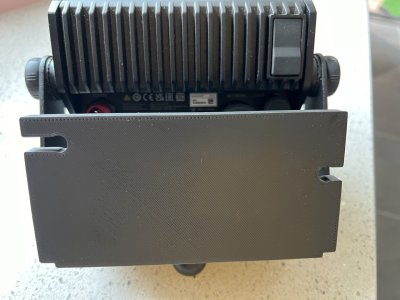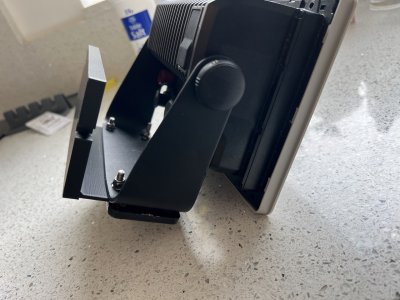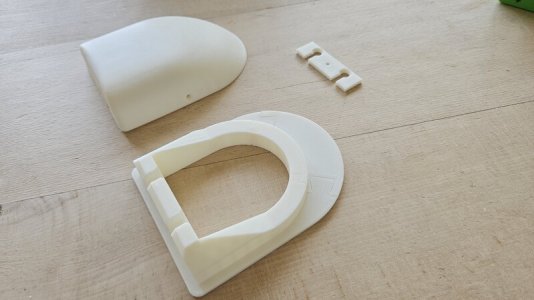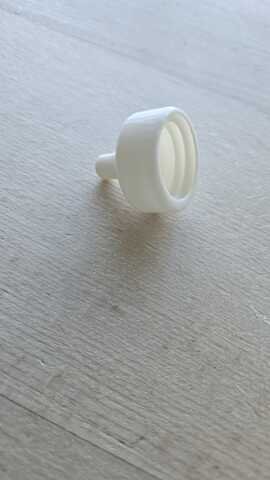LiftyK
Well-Known Member
Here's an example of how even the simplest of designs can be very useful when you have a 3D printer. I have a plotter that lives in the cabin when the boat is berthed and it comes out to a coachroof mount when we are underway. The problem I wanted to solve was eliminating pressure on the sockets on the back of the plotter when the weight of the cables is pulling on them. I used velcro on grab rails to take most of the cables weight off the plotter sockets but thought there must be a better way.
Now I made (it's almost too simple to say designed) a strain relief bracket. It's an "L" shape. The base has holes to accommodate the bolts that already attach the plotter to my mount. The back has keyhole slots to take and hold the cables straight.
Now I made (it's almost too simple to say designed) a strain relief bracket. It's an "L" shape. The base has holes to accommodate the bolts that already attach the plotter to my mount. The back has keyhole slots to take and hold the cables straight.






